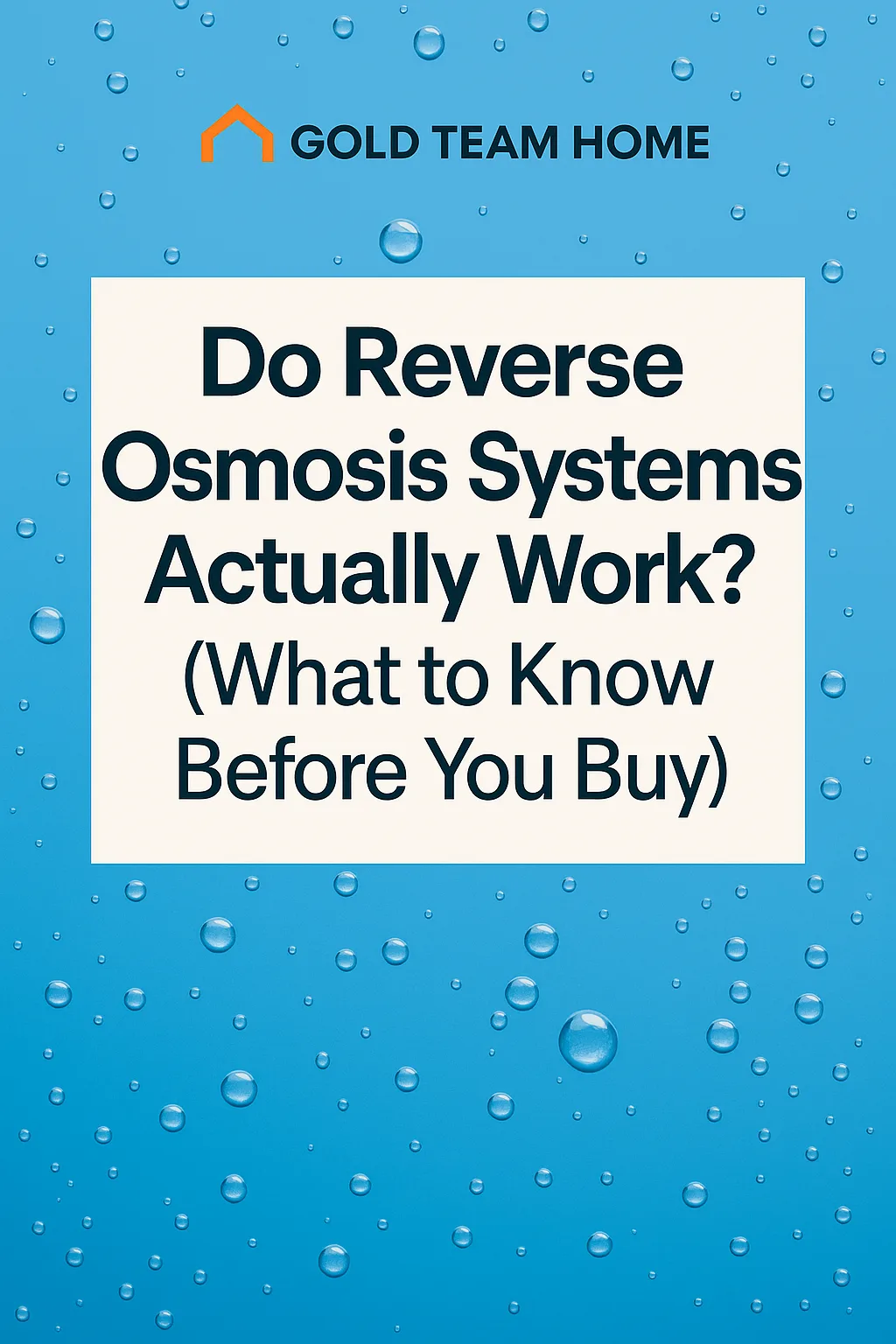So… Do Reverse Osmosis Systems Actually Work?
Short answer: yes — but only if you get the right one.
A true reverse osmosis (RO) system removes up to 99% of total dissolved solids (TDS) from your water. That includes:
- Chlorine
- Fluoride
- Lead
- Arsenic
- Nitrates
- Microplastics
- Heavy metals
- Pesticide traces
It’s one of the most thorough filtration methods available for home use — and modern RO systems are far more compact, efficient, and user-friendly than they used to be.
This post contains affiliate links. If you click through and buy something, we may earn a small commission at no extra cost to you. We only recommend systems we believe in.
How Does Reverse Osmosis Work?
Reverse osmosis forces water through a semi-permeable membrane that filters out contaminants based on size and molecular charge. Most RO systems also include:
- A sediment filter (for rust, dirt, sand)
- An activated carbon block (for chlorine, taste, and odor)
- A RO membrane (removes dissolved solids)
- Optional UV sterilization (kills bacteria/viruses)
- Optional remineralization stage (adds healthy minerals back)
Each stage plays a role — and some systems go up to 11 stages like the Waterdrop X12.
Common Misconceptions (And What’s Actually True)
Myth: RO wastes tons of water
Truth: Older systems had bad waste ratios. Today’s top models (like the G3P800) use 3:1 or better, meaning they’re very efficient.
Myth: RO removes all minerals = bad
Truth: RO does remove minerals — but some systems (like the X12) add them back in a safe, balanced way.
Myth: Installation is hard
Truth: Many tankless systems are designed for DIY installs in under an hour. No plumber needed if you’re comfortable with a drill and wrench.
What RO Doesn’t Do Well
RO systems are amazing for dissolved solids — but they won’t:
- Soften hard water (you’d need a separate softener for that)
- Boost water pressure (unless it includes a built-in pump)
- Work well if improperly maintained (filters need replacing!)
Our Favorite RO Systems for 2025
We tested the top Waterdrop models and ranked them by performance, value, and ease of install.
👉 Check out our Waterdrop system comparison guide →
Here are two standout picks:
💧 Best Overall: Waterdrop G3P800
- Tankless design, 800 GPD
- Smart faucet with real-time TDS display
- Efficient 3:1 drain ratio
- NSF certified and sleek under-sink install
💧 Best Value: Waterdrop G5P500
- More affordable RO option
- Compact, tankless, and beginner-friendly
- 7-stage filtration with faucet alerts
Final Take: Is a Reverse Osmosis System Worth It?
If you want water that’s actually clean — not just better tasting — reverse osmosis is one of the best upgrades you can make.
Modern RO systems are compact, quiet, and easy to maintain. Whether you’re dealing with sketchy city water, worried about microplastics, or just want to stop buying bottled water, a good RO system pays off fast.
👉 Ready to pick the right setup?
Compare our top-rated Waterdrop systems here.




